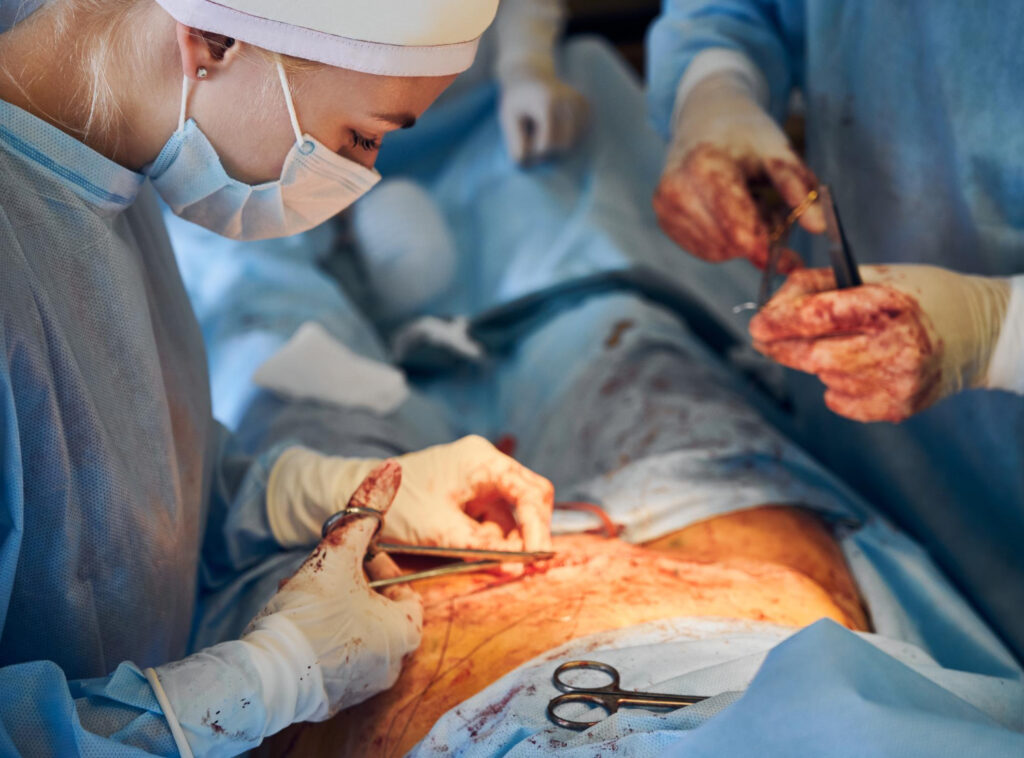Tips for recovering quickly from a tummy tuck surgery
A tummy tuck (abdominoplasty) is an elective cosmetic surgery to remove excess skin around the abdomen (belly or tummy). The goal is to tighten and slim the tummy area. It may also involve tightening or sewing abdominal muscles back together.
Tummy tucks are not weight loss surgery. If weight loss is your goal, you may also need liposuction or other types of surgery to achieve your desired result. Long-term results are not guaranteed, but avoiding weight gain after surgery can help maintain results.
Types of Tummy Tucks
A tummy tuck removes excess skin and fat. It might also include fastening the underlying abdominal muscles. The following are the most common tummy tuck techniques:
- Full or standard: This involves a hip-to-hip incision and another around the belly button.
- Extended: The incision goes around to the sides of the lower back. It removes more skin than the standard procedure. It is usually reserved for those who have lost a massive amount of weight.
- Fleur-de-lis: This technique gets its name from the shape of the incision. It uses a horizontal (side-to-side) incision and a vertical (up and down) incision between the belly button and the pubic area. It is reserved for patients who need skin tightened both vertically and horizontally.
- Mini: This requires a small horizontal incision between the hip bones. It only addresses the lower abdomen (below the belly button). Ideal candidates are usually close to their ideal weight and have small amounts of stubborn fat, excess skin, or stretch marks.
- Reverse: A reverse tummy tuck is a partial abdominoplasty in which loose skin is removed from the upper portion of the abdomen.
- Tummy tuck with liposuction: Since a tummy tuck alone does not remove fat, liposuction with a tummy tuck is ideal for those who need pockets of fat removed.
Tips for recovering quickly from a tummy tuck surgery
Recovery from any type of abdominoplasty may take two weeks to two months. One should expect to avoid strenuous movement for at least six weeks. Generally, if one had a large wound and/or had a substantial amount of skin and fat removed, you should expect a longer recovery time than if you have a small wound and had a small amount of tissue removed.
While specific post-op instructions may differ slightly, the following are tips to help prevent complications:
Hydrate:
Drink plenty of water. Some providers will suggest an occasional Gatorade or Pedialyte. Dehydration can make you feel generally ill, so consider drinking a glass of water if you feel bad.
Proper nutrition:
Follow a healthy diet with lean protein, fiber, and fruits and vegetables to prevent constipation and speed wound healing.
Rest:
Getting up and moving every couple of hours is important, but you should rest in between to increase healing.
Movement:
Try to get up to go to the bathroom or kitchen every two to three hours. It’s also a good idea to move your ankles around in circles every 15 minutes while awake. Mild activity decreases your risk of blood clots or lung infections.
Breathe deeply and cough:
Take deep breaths and cough (using a pillow to protect your tummy) every couple of hours to help decrease the risk of pneumonia.
Manage your pain:
Work with your provider regarding pain management. If you are in extreme pain, it’s hard to rest and heal.
Have an open conversation with your healthcare provider about the pros and cons of this surgery, as well as what to expect in the recovery period, including scarring. Your provider can help you make an informed decision about your situation.

